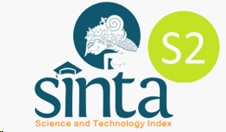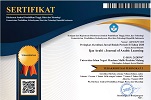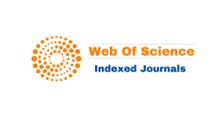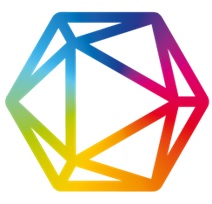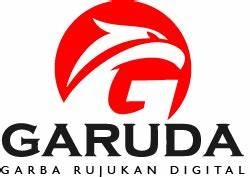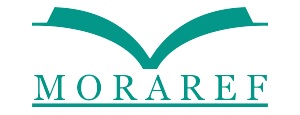Integration Of Moral Curriculum With Arabic Literature Stories And Parables Of The Qur'an QSP
Abstract
Keywords
Full Text:
PDFReferences
Al-Qur’an Al-Kareem.
Akram, H., Al-Adwan, A. S., Aslam, S., & Khan, M. I. (2023). Pedagogical practices and challenges in cultivating moral values: A qualitative study of primary school teachers in Pakistan. Education 3-13, 51(4). https://doi.org/10.1080/03004279.2021.1992471.
Al-Bazzar, Abu Bakr Ahmed bin Amr bin Abdul Khaliq Al-Atki. (2024). Al-Bahr Al-Zakhar. known as Musnad Al-Bazzar. Hadeeth no. 8949, from Abu Hurayrah report. Muhammad ibn Rizq Allah al-Kalawadhi told us: Na Sa'eed ibn Mansur said: Na 'Abd al-'Azeez from Ibn 'Ajlan from al-Qa'qa' from Abu Saalih. https:// www. islamweb. net/ar/library/ content/ 1000/4300/ index.php, 24. 12. 2024.
Al-Bukhari, Abdul Aziz bin Ahmed. (1974). kashf al'asrar ean 'usul fakhr al'iislam albizdiwi. altabeat aljadidat bial'uwfiti. New edition in ouvette: Arab Book House. Beirut. Lebanon.
Aldoobie, N. (2015). ADDIE Model Analysis phase. American International Journal of Contemporary Research, 5(6).
Al-Ghazali, Abu Hamid Muhammad Bin Muhammad Bin Muhammad Al-Tusi. (1937). Kitab Almustasfaa Min Ealm Al'usuli. Altabeat Al'uwlaa Almujaradati: Mustafa Muhammad Library. Egypt.
Alhafid, Abu Al-Walid Muhammad Bin Ahmed Bin Muhammad Bin Ahmed Bin Rushd Al-Qurtubi, Known As Ibn Rushd (2004). Bidayat Almujtahid Wanihayat Almuqtasidi: Cairo.
Al-Hiti Al-Iraqi, Abd Al-Hakim Abd Al-Rahman Asaad Al-Saadi. (1986). Mabahith Aleilat Fi Alqias Eind Al'usuliiyna: Dar Al-Bashaer Al'iislamiati. Beirut. Lebanon.
Al-Maqdisi Al-Dimashqi, Abu Muhammad Abdullah Bin Ahmed Bin Qudamah. (1984). Rawdat Alnazir Wjunnt Almanazir Fi 'Usul Alfiqh Ealaa Madhhab Al'iimam 'Ahmad Bin Alhanbali. Second Edition: Almaearif Library in Riyadh.
Al-Najjar, A. (2006). Maqaṣid al-shariʻah bi-abʻadjadidah. Beirut: Dar al-Gharb al-Islami.
Dunkin, M. J., & Biddle, B. J. (1974). The study of teaching: Holt, Rinehart & Winston.
Fraenkel, J., & Norman, E., Wallen. (1996). How to Design and Evaluate Research in Education. Third Edition: McGraw-Hill, Inc.U.S.A.
Gresham F. M., and Elliott S. N. (1990). Social Skills Rating System Manual. Publisher: American Guidance Service Inc.
Gulzar, H. U., Parveen, Z., & Fatima, H. Q. ulayn. (2023). “The Parables and Islamic Scriptures: An Analytical Study: Parables in the Quran”. Al-Irfan: Journal of Arabic Literature and Islamic Studies, 6(2), 259–273. https://doi.org/10.58223/alirfan.v6i2.6736.
Hazel, J. S., Schumaker, J. B., Sherman, J. A., & SheldonWildgen J. (1981). Asset: A Social Skills Program for Adolescents. Champaign, ll: Research Press.
Herlambang, M., Hamami, T., & Firmansyah, A. (2024). The Perennialism Approach in The Development of Islamic Religious Education Curriculum. Al-Risalah, 15(1). https://doi.org/10.34005/alrisalah.v15i1.3455.
Himdi, H. T., and Assiri, F. Y., (2023). "Tasaheel: An Arabic Automative Textual Analysis Tool-All in One," in IEEE Access, vol. 11, pp. 139979-139992, 2023, doi: 10.1109/ACCESS.2023.3340520.
Ilham, D., Asdiany, D., Zainuddin, A. H., K, N., Iksan, M., Santaria, R., & Alannasir, W. (2023). Caring Values in Islamic Religious and Moral Education on Merdeka Belajar Curriculum: A Study of Fifth-Grade Student and Teacher Books. AL-ISHLAH: Jurnal Pendidikan, 15(4). https://doi.org/10.35445/alishlah.v15i4.3763.
Kamali, Muhammad H. (2008). Maqasid Al-Shari‘Ah Made Simple, (London: The International Institute of Islamic Thought.
Marton, F., & Saljo, R. (1976). on Qualitative Differences in Learning I- Outcome and Process. British Journal of Educational Psychology, 46, 4-11.
Masruri, & Waliah. (2023). Implementation of Independent Curriculum in The Subjects of Islamic Religious Education and Morals Education. IJGIE, International Journal of Graduate of Islamic Education, 4(1). https://doi.org/10.37567/ijgie.v4i1.1958.
Maulidi, (2015). “Paradigma Progresif dan Maqasid al-shari‘ah: Manhaj Baru Menmukan Hukum Responsif”, dalam ASY-SYIR’AH: Jurnal Ilmu Shari‘ah dan Hukum, Vol. 49, No. 2 (Desember 2015).
Nazaruddin, N., & Zaimah, Z. (2024). Ustad Strategy in Moral Development in the Sea Tribe Communities on Kojong Island. Journal of Educational Review and Cultural Studies, 1(2). https://doi.org/10.61540/jercs.v1i2.23.
Pawelay, Z. T., Yahiji, K., Ondeng, S., & Arif, M. (2024). Curriculum Development for Aqidah Moral Subjects in Madrasas. Journal La Edusci, 5(1). https://doi.org/10.37899/journallaedusci.v5i1.966.
Rijal, A., Sauri, S., & Kosasih, A. (2023). Curriculum Framework: The Foundation of Value Education. Journal of College and Character, 24(2). https://doi.org/10.1080/2194587x.2023.2190126.
Shalabi, Muhammad Mustafa. (1947). Taelil Al'ahkam Eard Watahlil Litariqat Altaelil Watatwiriha Fi Eusur Aliajtihad Waltaqlidi. Al-Azhar Press.
Zhang, Q., Saharuddin, N. B., & Aziz, N. A. B. A. (2022). The Analysis of Teachers’ Perceptions of Moral Education Curriculum. Frontiers in Psychology, 13. https://doi.org/10.3389/fpsyg.2022.967927.
Fidayani, E. F., & Ammar, F. M. (2023). The Use of Azhari Curriculum in Arabic Language Learning at Islamic Boarding School. Nazhruna: Jurnal Pendidikan Islam, 6(1), 25–45. https://doi.org/10.31538/nzh.v6i1.2866
Unsi, B. T. (2021). Integration In the Curriculum of Teaching the Arabic Language (In Terms of Goals and Materials). Journal of Arabic Language Teaching, 1(2), 161–182. https://doi.org/10.35719/arkhas.v1i2.1310
Wahyu Pratama, A., Mahliatussikhah, H., & Murtadho, N. (2024). Opportunities and Challenges of Common European Framework of Reference for Language (CEFR) Standardization in Arabic Language Learning. Journal of Arabic Studies, 9(1), 33–42. https://doi.org/10.24865/ajas.v9i1.774
DOI: https://doi.org/10.18860/ijazarabi.v8i1.28690
Refbacks
- There are currently no refbacks.
Copyright (c) 2025 Kirembwe Rashid Abdul Hamed, Mohd Aderi bin Che Noh, Siti Rosilawati binti Ramlan, Mohammad Najib Jaffar, Sakinah binti Ahmad, Hayati binti Ismail, Maziahtusima Binti Ishak
License URL: https://creativecommons.org/licenses/by-sa/4.0/






